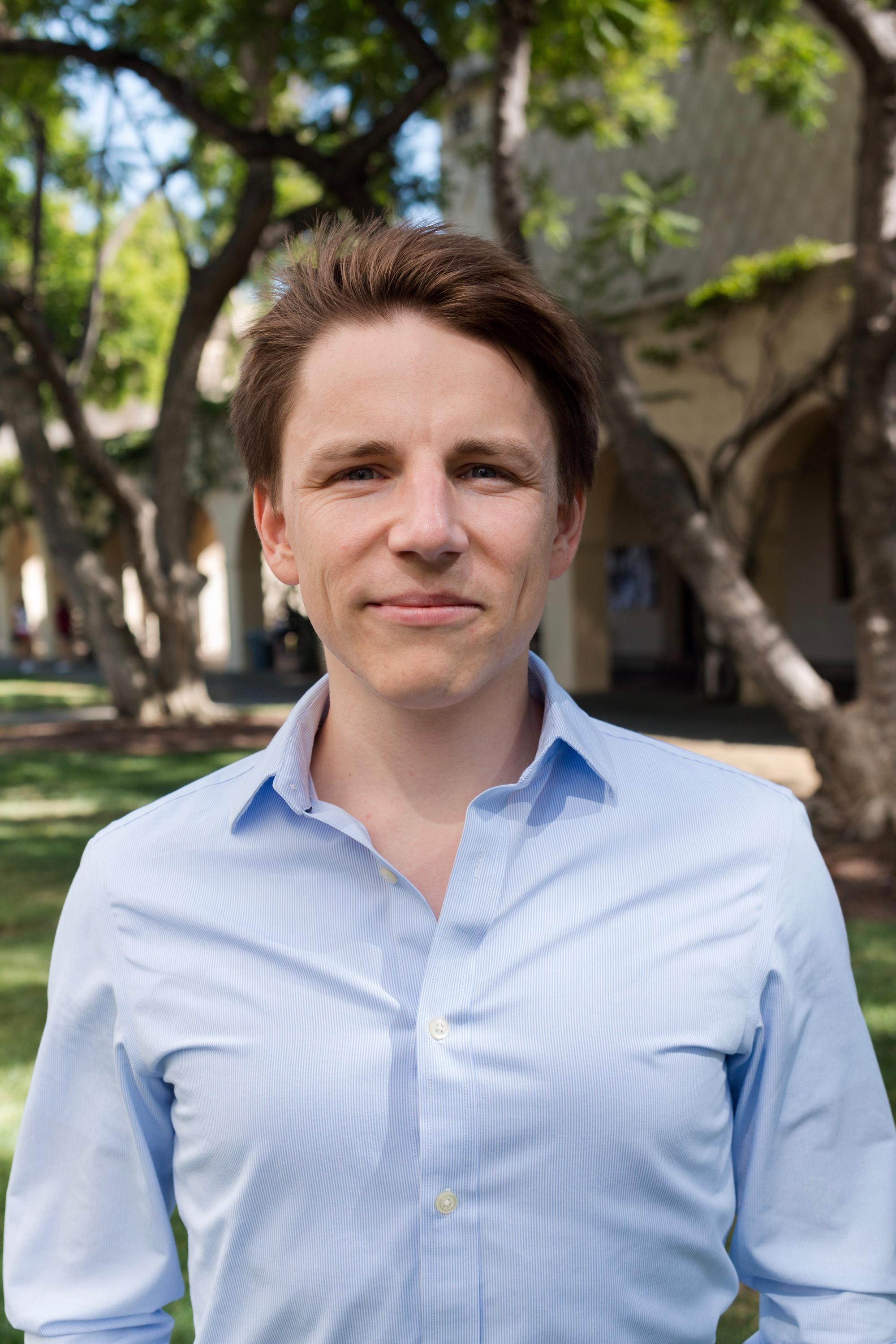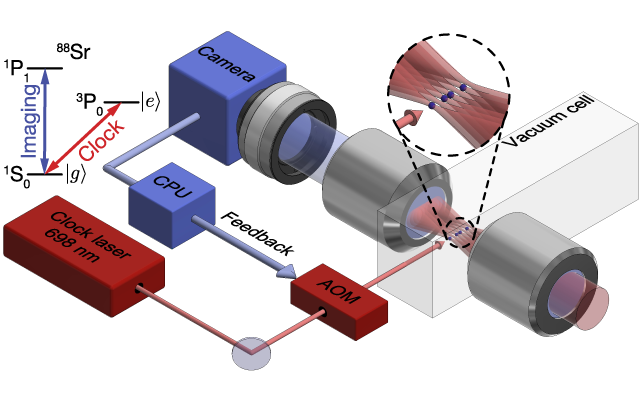The best clocks in the world can keep time so accurately that they only lose a second in millions or even billions of years. Yet researchers are still fervently pursuing even better clocks.Once a certain threshold of clock accuracy and stability is crossed, it will open up tremendous opportunities to understand the universe and to develop quantum technologies like accelerometers, gravimeters, and communication systems.
IQC Research Associate and Senior Technical Lead, Quantum Simulation at Transformative Quantum Technologies (TQT) Alexandre Cooper-Roy developed an advanced new clock system during his time as a Postdoctoral Scholar at the California Institute for Technology (Caltech) with collaborators at NASA Jet Propulsion Laboratory that opens new avenues for ultra-stable and accurate optical atomic clocks and could serve as the default platform for cutting-edge clock development moving forward.
Beating the state-of-the-art
Clocks measure the passage of time by counting the oscillations of a resonator. In a grandfather clock, the resonator is a pendulum. In your computers clock, the resonator is a crystal that vibrates when electricity is applied. The best clocks available right now use lasers regulated by quantum oscillations of atomsusually transitions of electrons between orbitsas their resonators. These atomic optical clocks generally come in two varieties: single ion and neutral atom array optical clocks.
Single ion optical clocks use a single charged atom measured many times to regulate their lasers frequency. While this is the most accurate platform for measuring time, it is not the most stable, and the amount of time it takes to get statistically sufficient data is much longer than the alternative.
Optical lattice clocks are made up of neutral atoms trapped in a lattice of light formed by interfering laser beams, like eggs in their carton, which are spaced apart and held in place so they wont interact with each other. This system of atoms is measured as a whole to regulate the lasers frequency, which provides much greater stability than a single ion.

IQC researcher Alexander Cooper-Roy.
But there’s a problem—every atom in the lattice might be telling time a little differently due to variations in a magnetic field, the depth of the traps or the laser light. Analyzing all of these atoms together means including all of these little variations that reduce the resolution of the measurement, meaning a clock less accurate than single ion optical clocks.
Cooper-Roy and his team saw an opportunity to combine the strengths of both platforms and mitigate the weaknesses. An atomic array optical clock with single-atom readout could use the stability of a neutral atom lattice and the accuracy that comes with addressing one atom at a time.
So, they built it.
The new standard
The element strontium has two outer electrons that can pair their spins in different states. There is one type of transition between these states that’s normally forbidden, but when you apply a magnetic field, you can use a laser to force it.
This transition occurs at an ultra-narrow frequency that Cooper-Roy and his team used to stabilize the frequency of their laser. By measuring whether or not their laser was exciting this transition, the researchers were able to tell if the laser was oscillating at the correct frequency and adjust it accordingly.
With their resonator tuned to this amazingly precise frequency reference based on forty strontium atoms isolated in a lattice of optical tweezers, the researchers managed to build a an array optical clock with each atom measured individually, thus providing an improved method over analyzing the whole group of atoms as a block.
Now that we have single atom readout, we can see that each atom tells time differently, said Cooper-Roy. Long term, I think this platform is the way forward to have more stable and more accurate clocks.
Cooper-Roy says there are two obvious paths of development that could make this the default platform for theoretical research and field applications. First, by increasing stability and accuracy even further, a whole new world of fundamental physics research would open up.

The researchers interrogated about 40 88Sr (strontium) atoms trapped in an 81-site tweezer array on an ultra-narrow clock transition (698 nanometres). They used fluorescence imaging to detect population changes in the clock states with single-atom resolution and processed the information with a central processing unit (CPU). A feedback signal was applied to the clock laser frequency using an acousto-optic modulator (AOM).
“If we reach to a certain relative stability, this opens up a whole field of research in fundamental physics because then you can use these clocks to look for gravitational waves, look for dark matter and to look for potential variation in fundamental constants,” said Cooper-Roy.
The next step in this direction is to let the atoms in the lattice interact and create entanglement between them, and then use this entanglement as a resource for stability.
Second, the team already built part of their set-up on a rack, meaning the path to a fully transportable set-up is a relatively straightforward engineering problem. “You could bring these clocks into the field, on a truck, up in a satellite, wherever, and use them for relativistic geodesic measurements and other practical applications,” said Cooper-Roy.
Bringing the cutting-edge to IQC
Cooper-Roy has come to IQC as a Research Associate, Senior Technical Lead for Transformative Quantum Technologies. With the help of his team, he is building an optical tweezer setup similar to the one at Caltech. But this time, he’s not making a clock.
“In general, optical tweezers are used in three different applications: quantum metrology [measuring time], quantum information processing where you can use gates and build a quantum computer, and quantum simulation,” said Cooper-Roy. “These atoms behave like little magnets interacting with each other. We are interested in simulating quantum magnetism with arrays formed by more than a hundred rubidium atoms.”
The team is still in the process of designing, building, assembling and benchmarking the setup at IQC, but the first thing they will do is create many-body entanglement between their array of atoms. Instead of using entanglement as a resource for clock stability, the researchers will study its dynamics: how entanglement grows, how it is lost, and more.
This new platform is the latest addition to a group of theoretical and experimental approaches to quantum simulation already taking place at IQC among various research groups. Cooper-Roy is excited to continue work on this type of advanced optical tweezer array setup.
“There are only a few groups in the world using this kind of setup, and we’re bringing these cutting-edge techniques to Waterloo, which takes us to the next level.”
“An Atomic Array Optical Clock with Single-Atom Readout” was published in Physical Review X December 11, 2019.